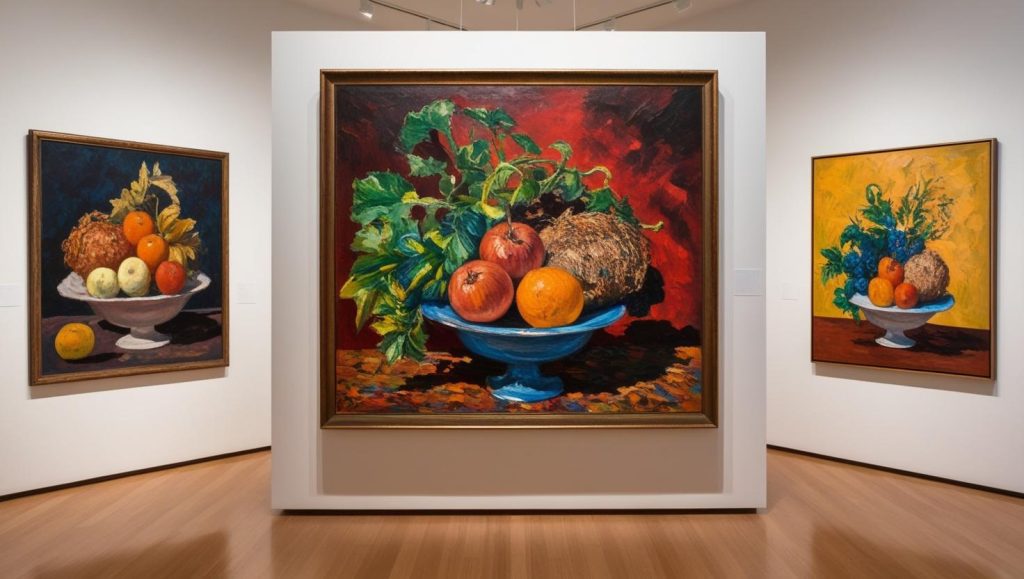Introduction
Painting is one of the oldest and most expressive art forms, encompassing various techniques, styles, and materials. Whether you are learning color theory, brush techniques, or composition, mastering the fundamentals of painting is essential for artistic growth. This Painting Fundamentals Homework Help guide explores key painting principles, essential tools, and expert resources to help students improve their skills.

Understanding the Fundamentals of Painting
Painting involves combining colors, textures, and light to create visually compelling images. Key areas of study include color theory, brush techniques, perspective, and composition.
1. The Importance of Learning Painting Fundamentals
Understanding painting fundamentals allows artists to express emotions, tell stories, and develop their unique artistic voice.
- Key Tip: Start with the basics, such as mixing colors and understanding light and shadow.
- Resource: Tate Museum provides insights into painting techniques and historical styles.
2. Essential Painting Materials and Tools
- Brushes – Round, flat, fan, and liner brushes for different strokes.
- Paint Types – Acrylic, oil, and watercolor each offer unique qualities.
- Canvas and Paper – Different surfaces affect paint application.
- Palette and Mixing Tools – Essential for blending and creating color harmony.
- Resource: Blick Art Materials offers a comprehensive selection of painting supplies.
3. Mastering Color Theory
Color theory helps artists create balance and harmony in their paintings.
- Primary Colors: Red, blue, and yellow.
- Secondary Colors: Green, orange, and purple.
- Tertiary Colors: Mixtures of primary and secondary colors.
- Key Tip: Use complementary colors to create contrast and depth.
- Resource: Adobe Color provides a color wheel tool for understanding color relationships.
4. Painting Techniques for Beginners
- Blending – Smooth transitions between colors.
- Glazing – Applying thin layers for depth.
- Dry Brushing – Creating textured effects.
- Impasto – Thick paint application for a three-dimensional look.
- Resource: Skillshare offers online painting courses covering various techniques.
Common Challenges in Learning Painting
Many students struggle with:
- Color Mixing – Achieving the right shade and avoiding muddy colors.
- Brush Control – Learning different strokes and handling.
- Composition – Arranging elements for a balanced artwork.
- Perspective and Proportion – Creating realistic depth and proportions.
Strategies for Excelling in Painting Homework Assignments
- Practice Daily – Repetition helps develop muscle memory for brush techniques.
- Experiment with Styles – Try different art movements like Impressionism, Abstract, and Realism.
- Learn from Masters – Study works by Van Gogh, Monet, and Picasso.
- Use Reference Images – Observing real-life objects improves accuracy.
- Join Art Communities – Platforms like DeviantArt allow artists to share and critique work.
Notable Painting Styles and Their Techniques
1. Impressionism
- Artists: Claude Monet, Pierre-Auguste Renoir.
- Techniques: Short brushstrokes, bright colors, and light focus.
- Lesson: Capturing movement and atmosphere.
2. Realism
- Artists: Gustave Courbet, Edward Hopper.
- Techniques: Attention to detail and accurate representation.
- Lesson: Observing and replicating reality.
3. Abstract Art
- Artists: Wassily Kandinsky, Jackson Pollock.
- Techniques: Expressive use of color and form.
- Lesson: Exploring emotions through non-representational art.
4. Watercolor Painting
- Artists: J.M.W. Turner, Winslow Homer.
- Techniques: Layering washes, wet-on-wet, and dry brush effects.
- Lesson: Using transparency to create depth.
How to Excel in Painting Fundamentals Homework Assignments
- Study Composition Rules – Apply the rule of thirds and leading lines for balance.
- Develop a Sketching Habit – Strong drawings enhance painting accuracy.
- Explore Light and Shadow – Understanding chiaroscuro improves realism.
- Practice Different Mediums – Experiment with oils, acrylics, and watercolors.
- Use Online Art Tutorials – Websites like Proko provide expert art instruction.
Recommended External Resources for Painting Fundamentals Homework Help
- MoMA Learning – Art history and technique guides.
- The Art Story – Information on art movements and styles.
- ArtStation – A platform for digital and traditional artists.
- Pinterest – A great source for painting inspiration and tutorials.
Conclusion
Painting is a fundamental artistic skill that requires patience, practice, and creativity. By understanding color theory, mastering brush techniques, and exploring various painting styles, students can enhance their artistic abilities. This Painting Fundamentals Homework Help guide provides essential insights and resources to improve painting skills and succeed in art assignments.


